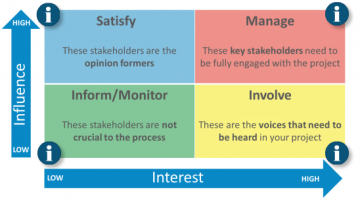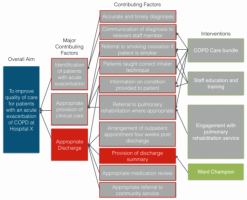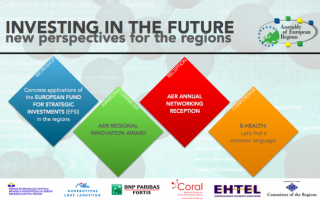 Share this!
Share this!(If you feel you understand all of the words of the title but not the title itself, please read through, you will be seeing clearly soon)
E-health, economic growth & social change
Delegates at the AER Committees joint Fall Plenaries in Izmir (TR) had the opportunity to participate in a workshop on health innovation ecosystems, which is a continuation of the work initiated by Committee 1 President Jean-Luc Vanraes and Committee 2 President Agneta Granström in the field of e-health last Spring in Timis (RO). Indeed while demographic change should be an opportunity to develop IT innovation and e-health technologies, SMEs are the backbone of the European economy and more than ever before regions need to support their companies in being able to take advantage of the growth potential of e-health & the silver economy.
Health innovation: from discovery to commercialisation
As Dr. Deborah Jackson writes in her white paper on innovation ecosystems, and Gustav Söderlund (E-health Strategist, Norrboten, SE) explained in the workshop, the term innovation ecosystem derives from the analogy with biological ecosystems. These are a complex set of relationships among the living resources, habitats, and residents of an area. Their functional goal is to reach sustained equilibrium.
An innovation ecosystem brings together very diverse actors and entities which work for technology development and innovation. This includes the material resources and human capital of universities, colleges of engineering, business schools, business firms, venture capitalists, industry-university research institutes, state or regional economic development agencies and chambers of commerce, funding agencies, policy makers, etc.
Health innovation ecosystems bring even more stakeholders together: patients, carers, informal carers (family, friends…), doctors, nurses, hospitals plus the stakeholders of a “classic” innovation ecosystem with the aim of bringing innovation to users and improve their health and wellbeing, while improving resource efficiency in healthcare systems. Because healthcare systems are expensive.
And this is one of the reason which make health innovation ecosystems difficult to create or to sustain: engaging stakeholders and creating a shared vision is a challenge.
Stakeholder engagement
The workshop aimed at identifying methods to engage stakehoders as well as methods to create shared objectives among diverse stakeholders. Prof Mitch Blair from the Imperial College of London, and Principal Investigator of the MOCHA project in which AER is a partner, shared his experience in engaging stakeholders in Northwest London and facilitated the workshop
On the basis of the e-learning quality improvement tools developped by the National Institute for Health Research (NIHR) Collaboration for Leadership in Applied Health Research and Care (CLAHRC) Northwest London (NWL), participants to the workshop were invited to identify stakeholders who should be engaged in their respective regions to create health innovation ecosystems.

The Stakeholder Engagement mapping tool used by AER delegates allows to analyse the list of stakeholders. Mapping stakeholders evidences their influence and interest in the success of a given project. This is a good basis to prioritise activities in the stakeholders management plan. The tool helps clarifying why certain groups of stakeholders need to be engaged, what they can retrieve from their engagement and what they will provide.

Another tool from the QI4U e-learning platform AER members used during this workshop was the Action-Effect Diagramm, which allows stakeholders to first of all agree on a shared overall aim and then agree on the different factors leading to this goal. Only once all the factors have been identified, will stakeholders decide on specific interventions. As was also evidenced during the workshop, we are very prone to proposing solutions which will lead to hidden details not being taken into account. Starting a complex initiative with a fixed idea on an intervention leads to hidden details becoming a barrier in the implementation of the initiative. The Action-Effect Diagramm avoids this hurdle by starting with the aim. It also allows to
- design smarter interventions
- have a clearer of the impact you aim to achieve and how
- explain unexpected results
- provide intermediate evidence if the overall project aim isn’t met
Such tools are therefore very valuable for policy makers in the setting up of large projects and in this case in the creation of regional health innovation ecosystems.
E-health: let’s find a common language

The workshop at the Committees autumn plenaries fits in a wider framework of actions the Assembly of European Regions is implementing to revitalise democracy and engage stakeholders. One of the major challenges with such diverse stakeholders and diverging interests in the field of e-health is to increase mutual understanding and trust. While improving cooperation is on all lips, the consequences of miscommunication are often under-estimated. The so-called geek-gap is costing millions to the economy.
This is why the AER’s Committee (1) on Economy and regional development and Committee (2) on Social policy and public health are organising an event “E-health: let’s find a common language” on December 1st together with AER partner networks CORAL, EUREGHA and EHTEL at the Committee of the Regions.
The event aims at providing participants with:
– information on funding opportunities in the field of healthcare, especially for companies
– new connections: opportunities for matchmaking and peer-to-peer meetings
– tested ideas to improve communication between stakeholders
– inspiration to engage stakeholders from the demand, the suppliers and the users sides in e-health innovation
– mutual understanding between different stakeholders
It is still possible to register!
(now you can see clearly!)
Other upcoming events
 ALEC, Accelerating Digital Health is organised for the fifth time in Norrbotten (SE) and will be an opportunity to discuss how to bridge health gaps in the age of digital everything. The conference is a place for meaningful connection with peers and experts from all over the world in an incredible environment where time and space seem to obey to different rules. These two days of inspiration, networking and skill development will enable participants to futher engage for the digital transformation of health and society as a whole and develop tools to design better health for all.
ALEC, Accelerating Digital Health is organised for the fifth time in Norrbotten (SE) and will be an opportunity to discuss how to bridge health gaps in the age of digital everything. The conference is a place for meaningful connection with peers and experts from all over the world in an incredible environment where time and space seem to obey to different rules. These two days of inspiration, networking and skill development will enable participants to futher engage for the digital transformation of health and society as a whole and develop tools to design better health for all.
Once again ALEC will present a great line-up of top-level digital health thought leaders, policy makers and business innovators who will deliver inspiring and informative keynotes on The Digital Transformation of Healthcare and Health Equity in the Digital Age.
Regions, which would like to share their experience in change management for digital transformation should contact AER Coordinator for Policy & Knowledge Transfer Johanna Pacevicius ([email protected])
Photo credit featured image: Shawn Alladio @Flickr http://tinyurl.com/hnbycta
